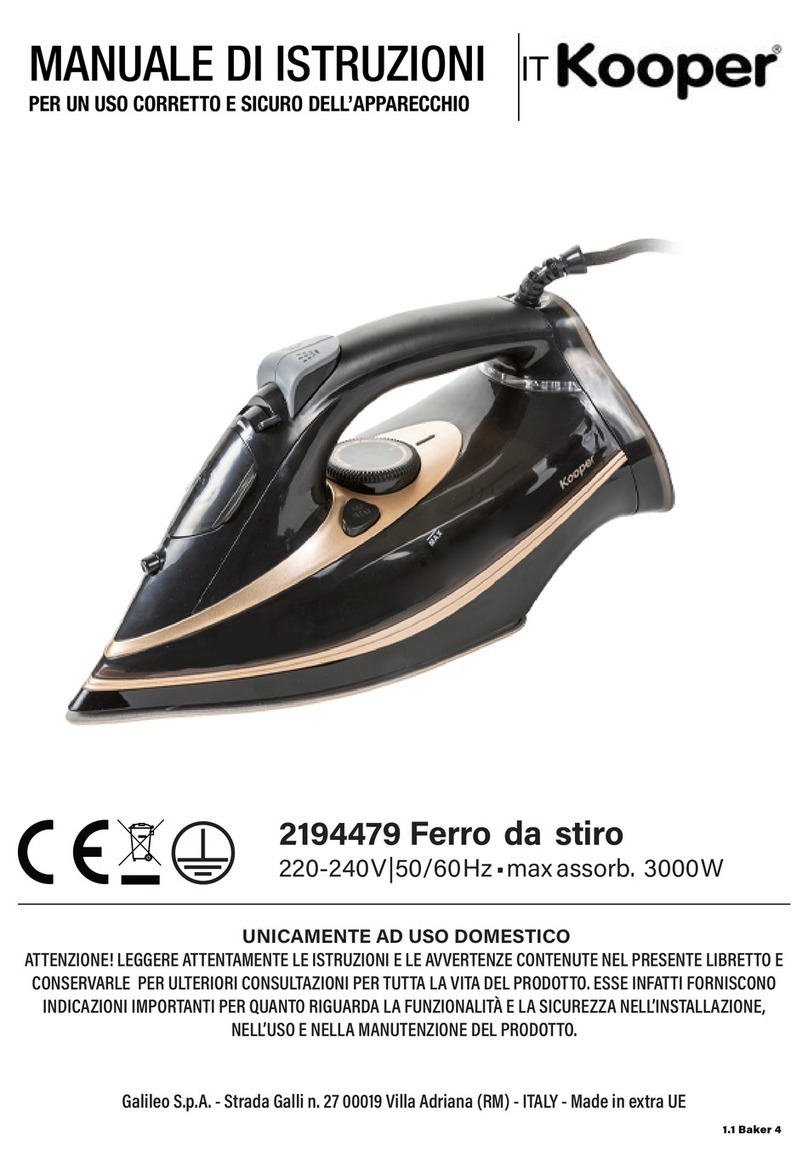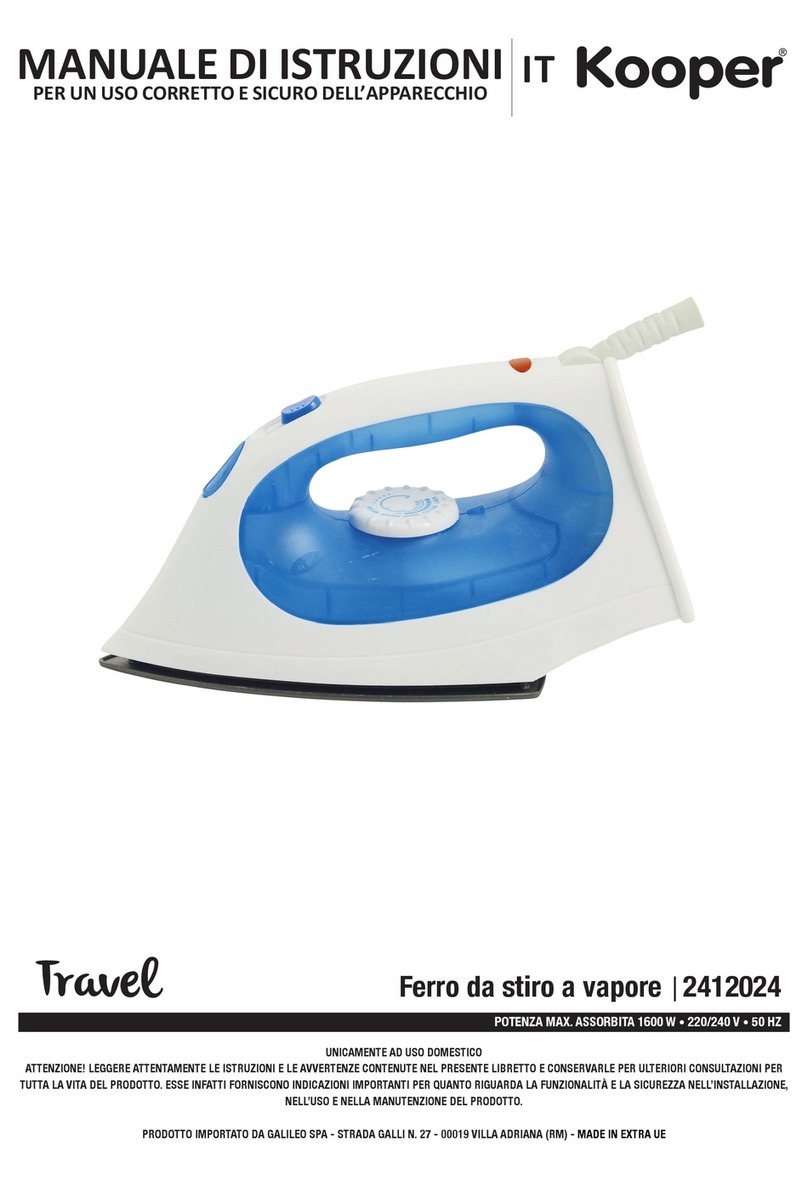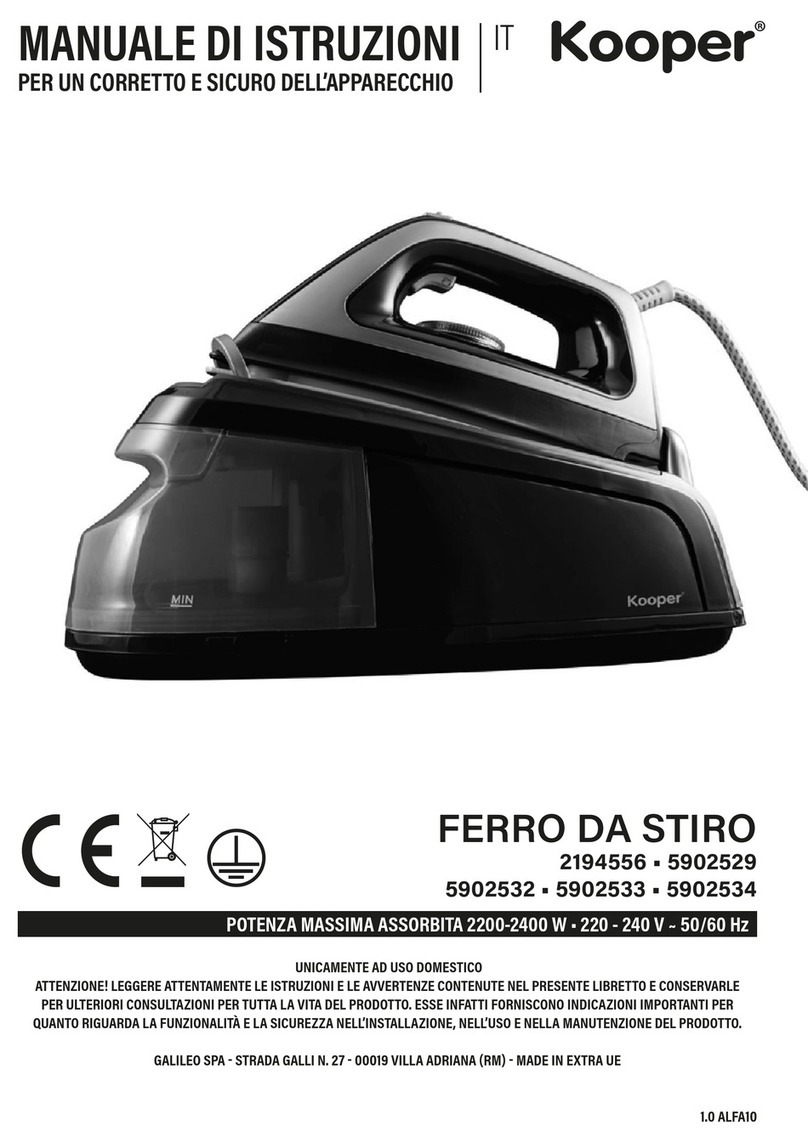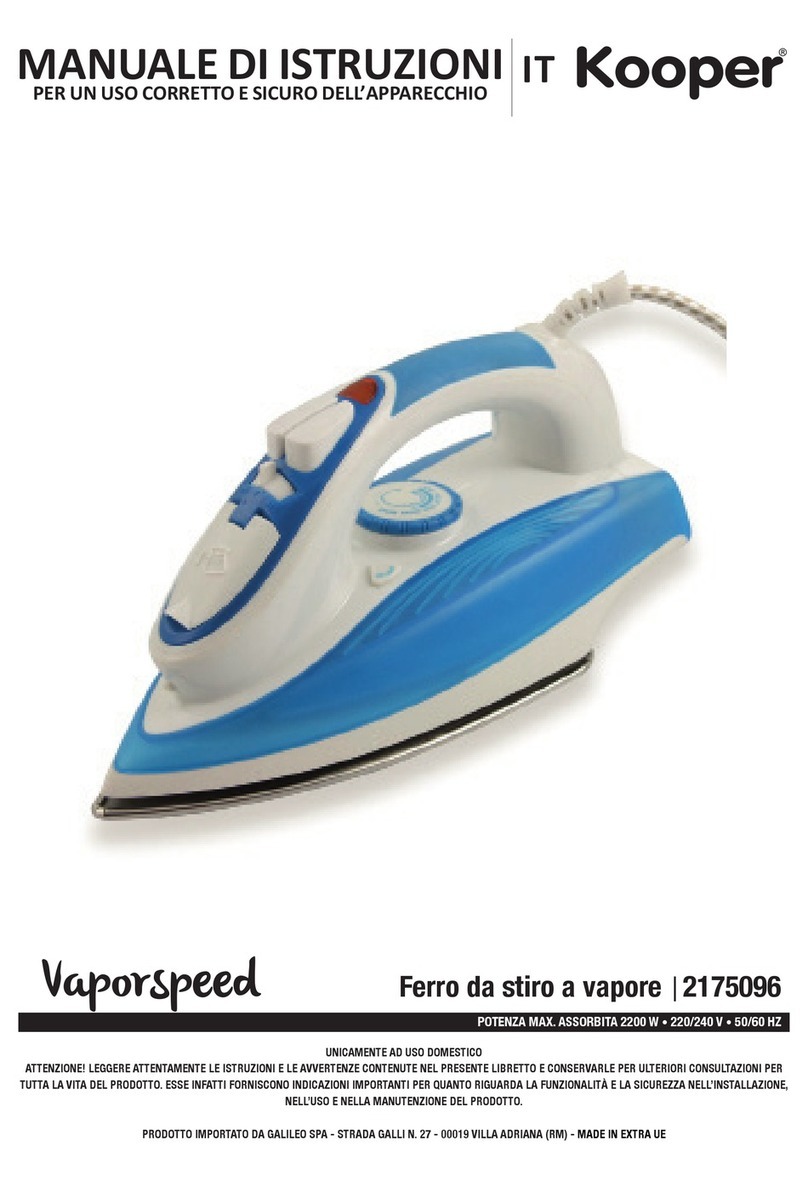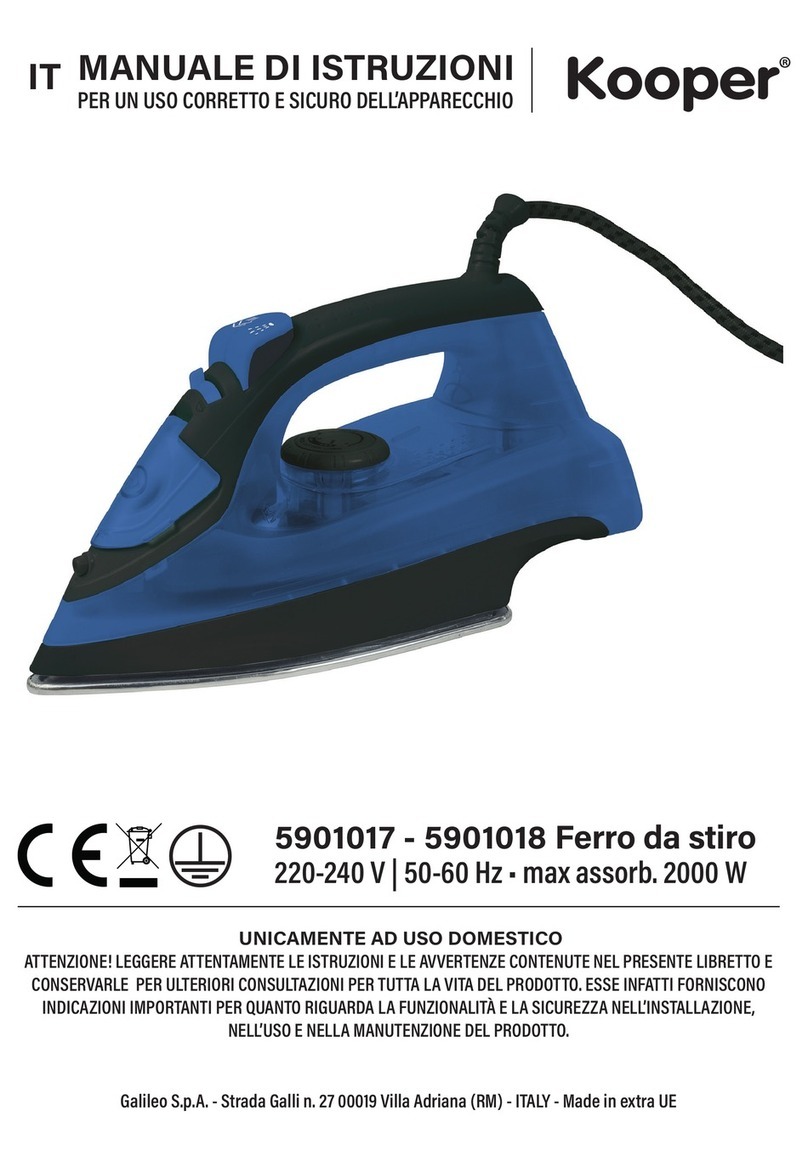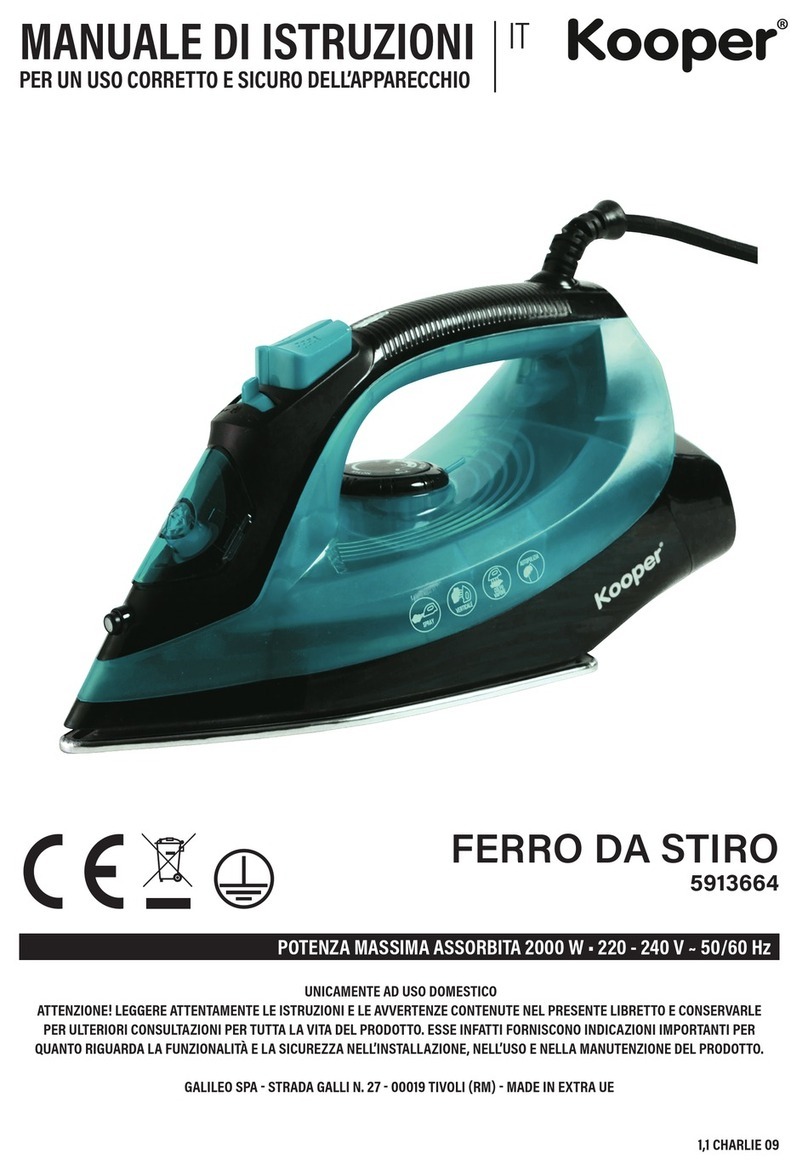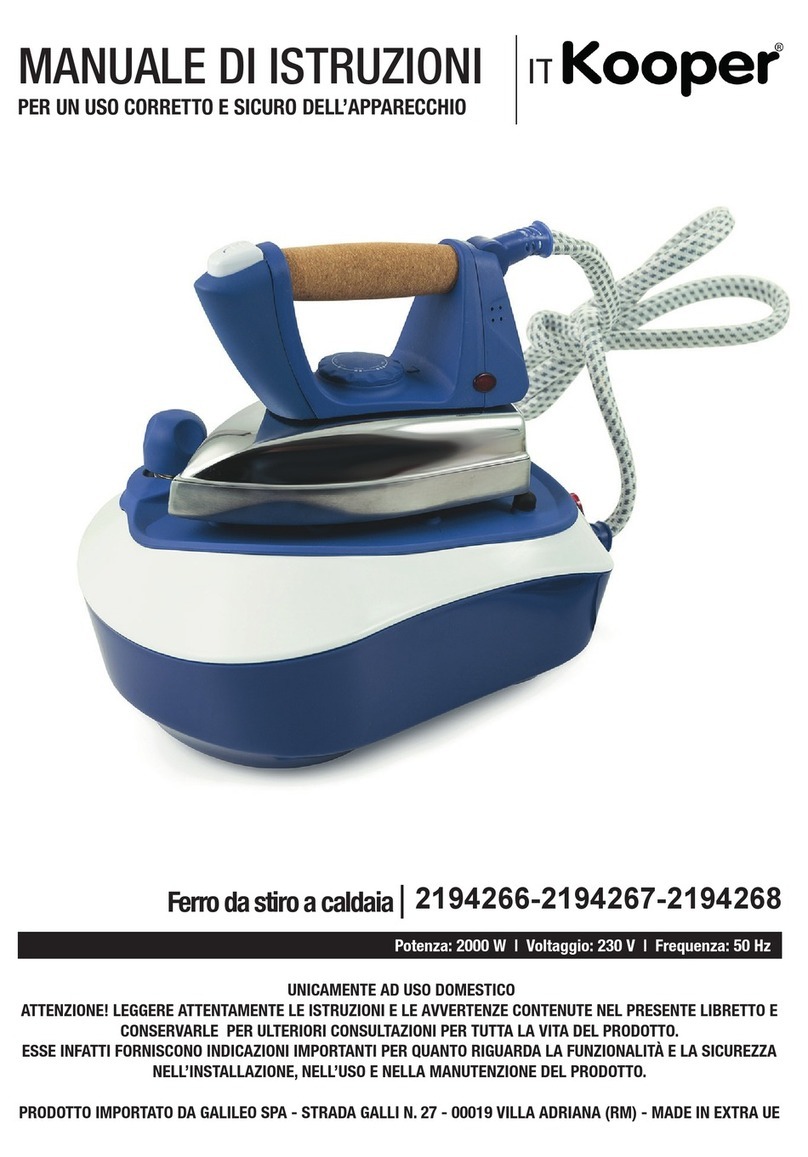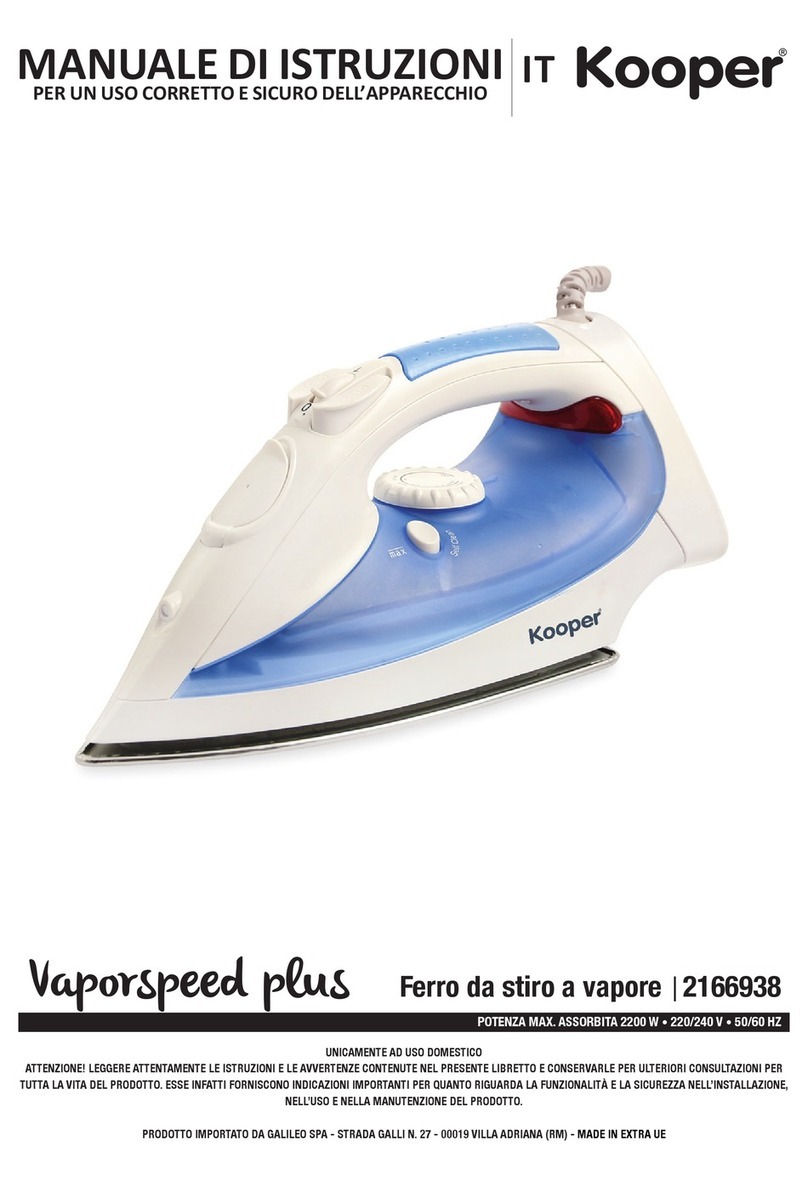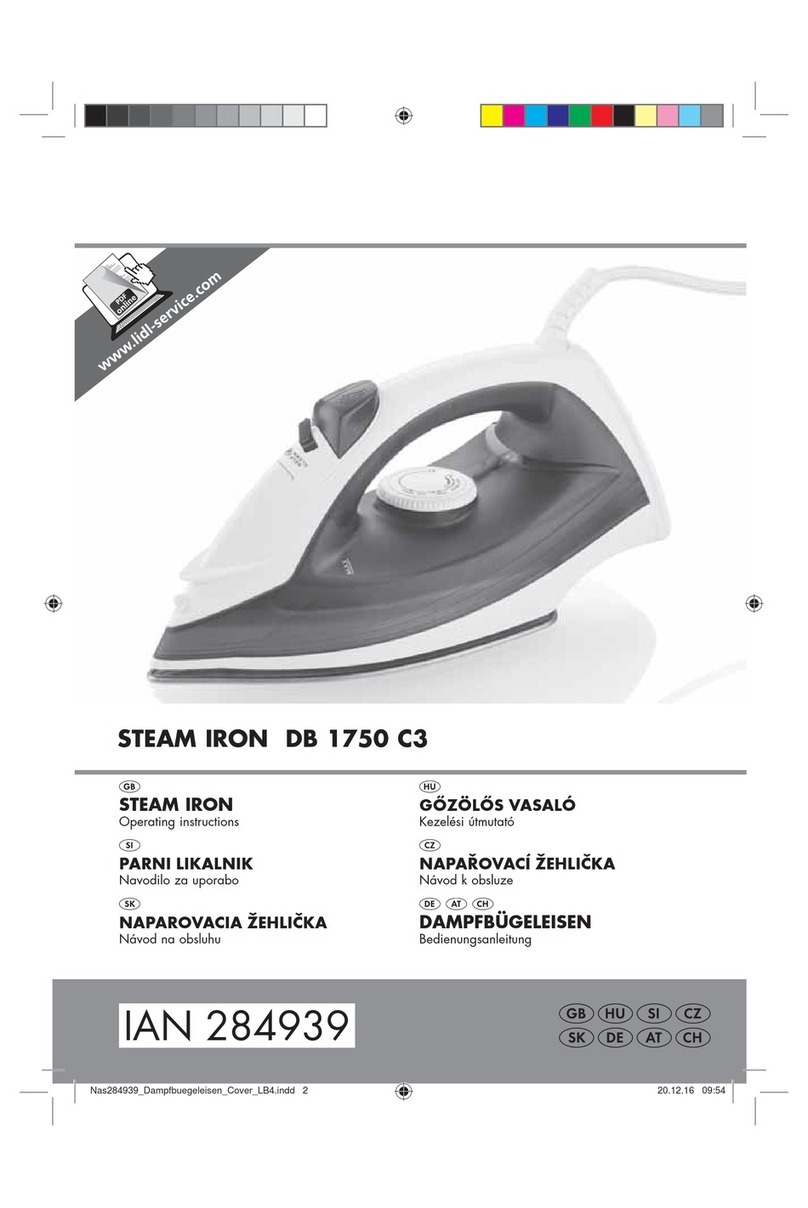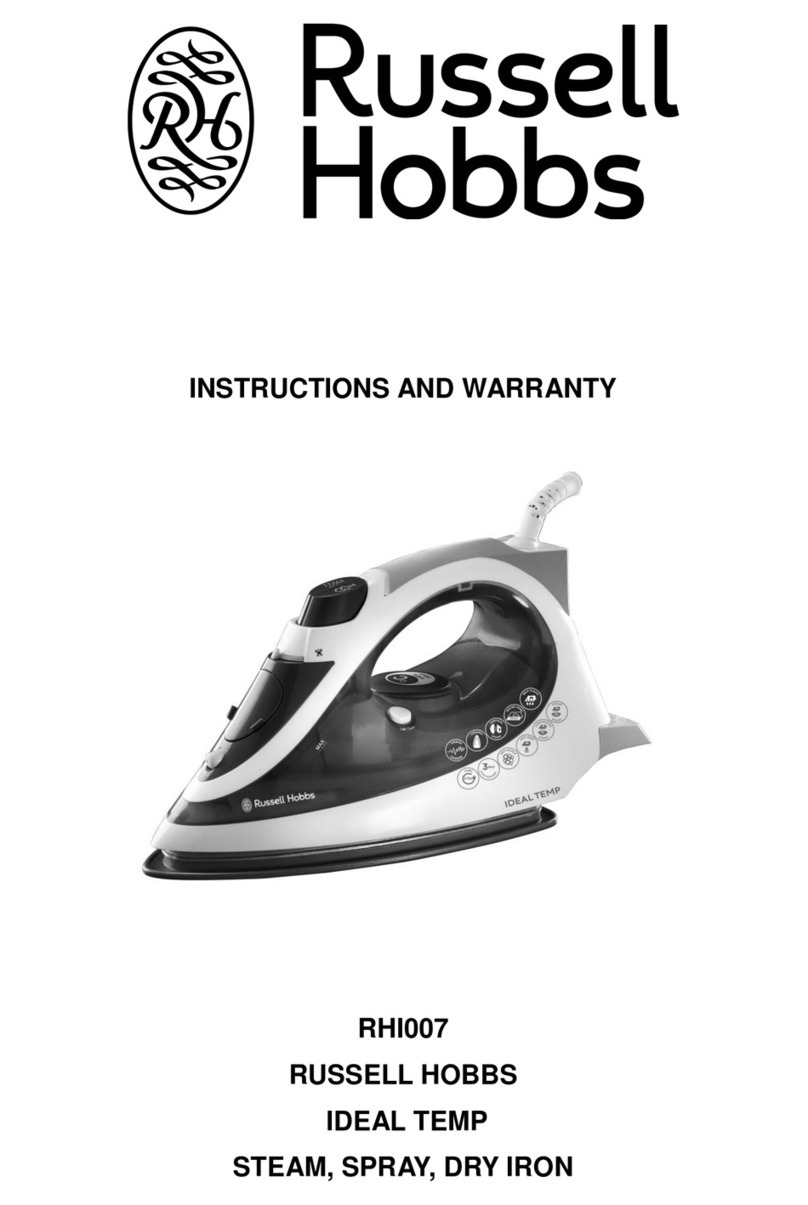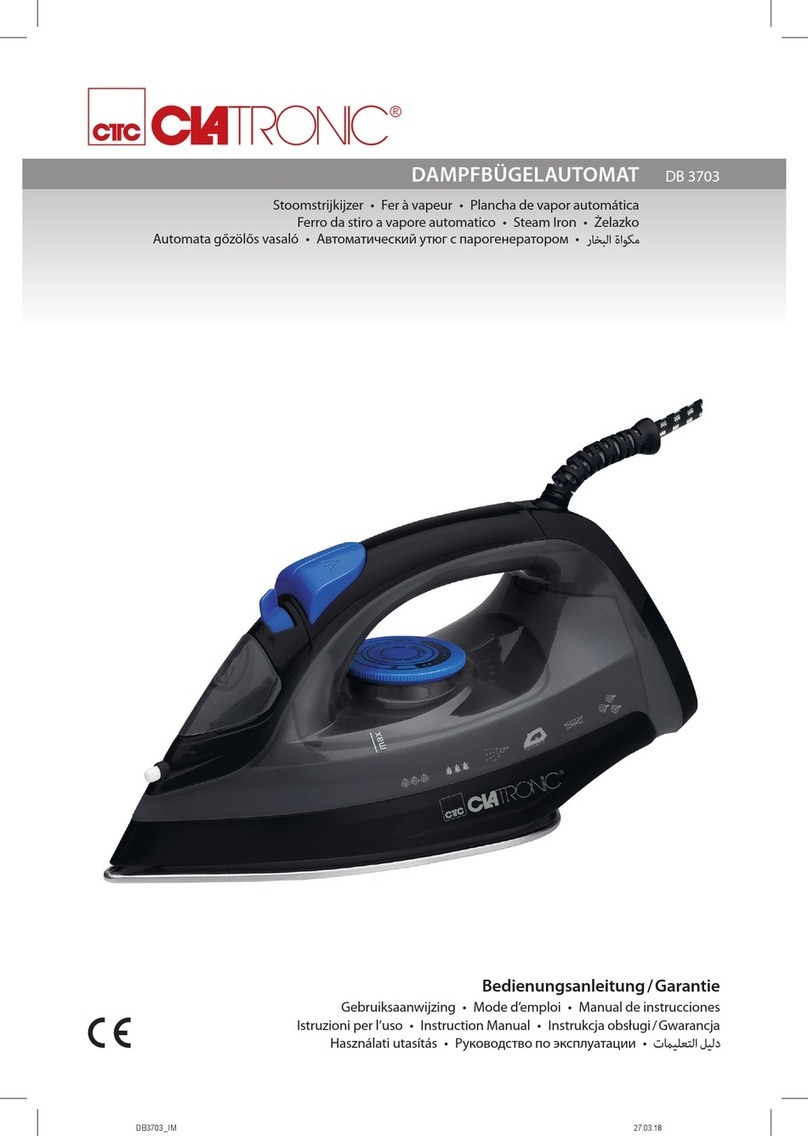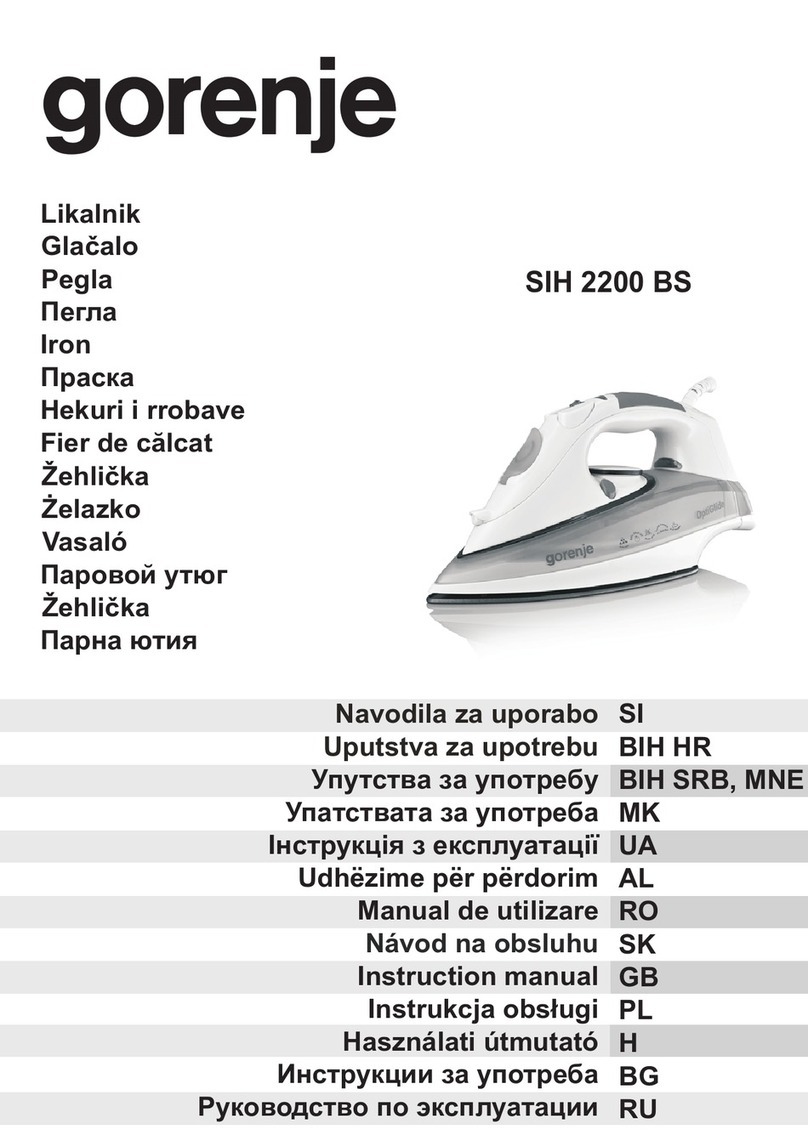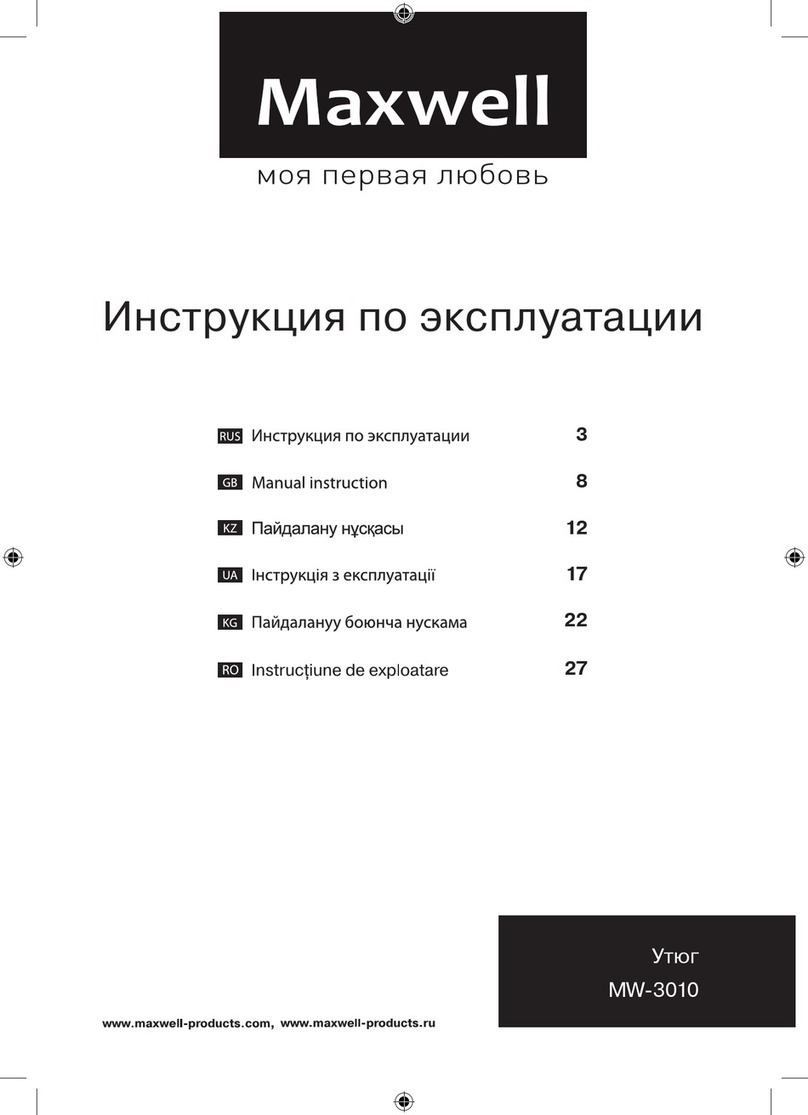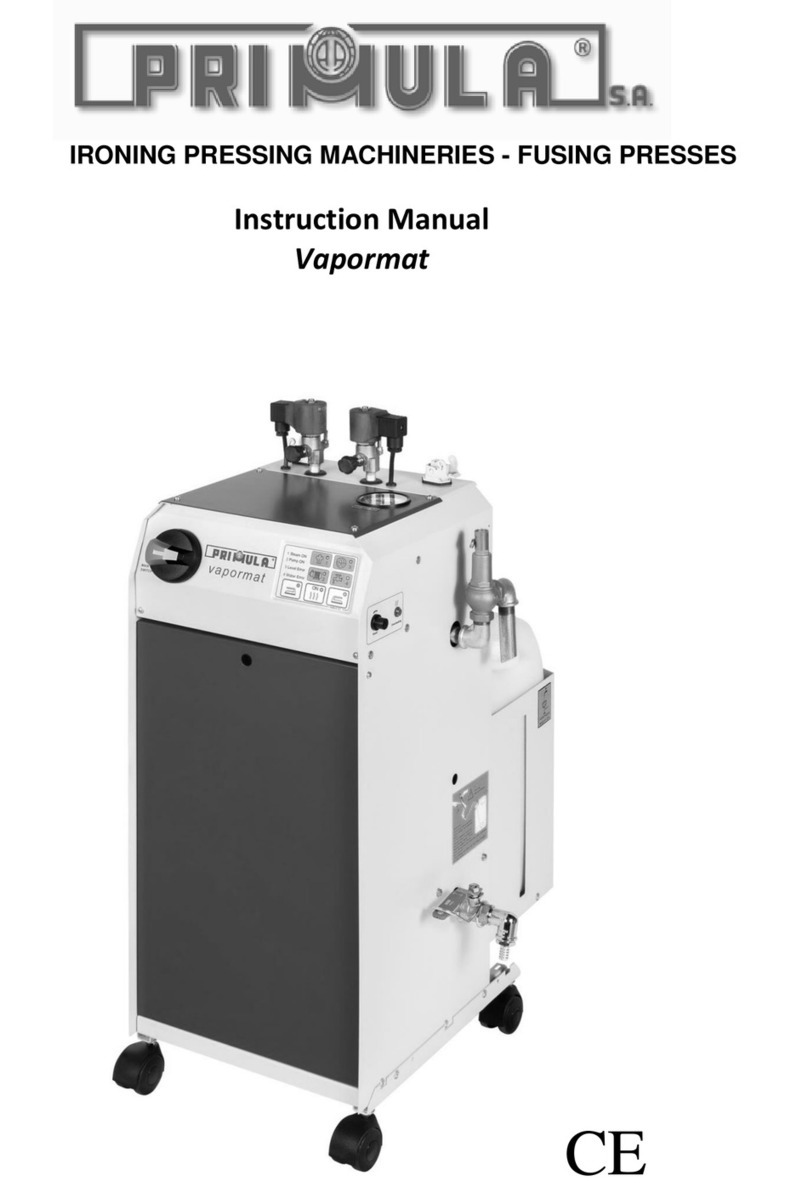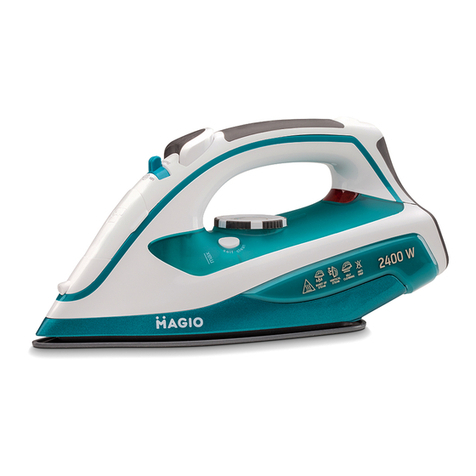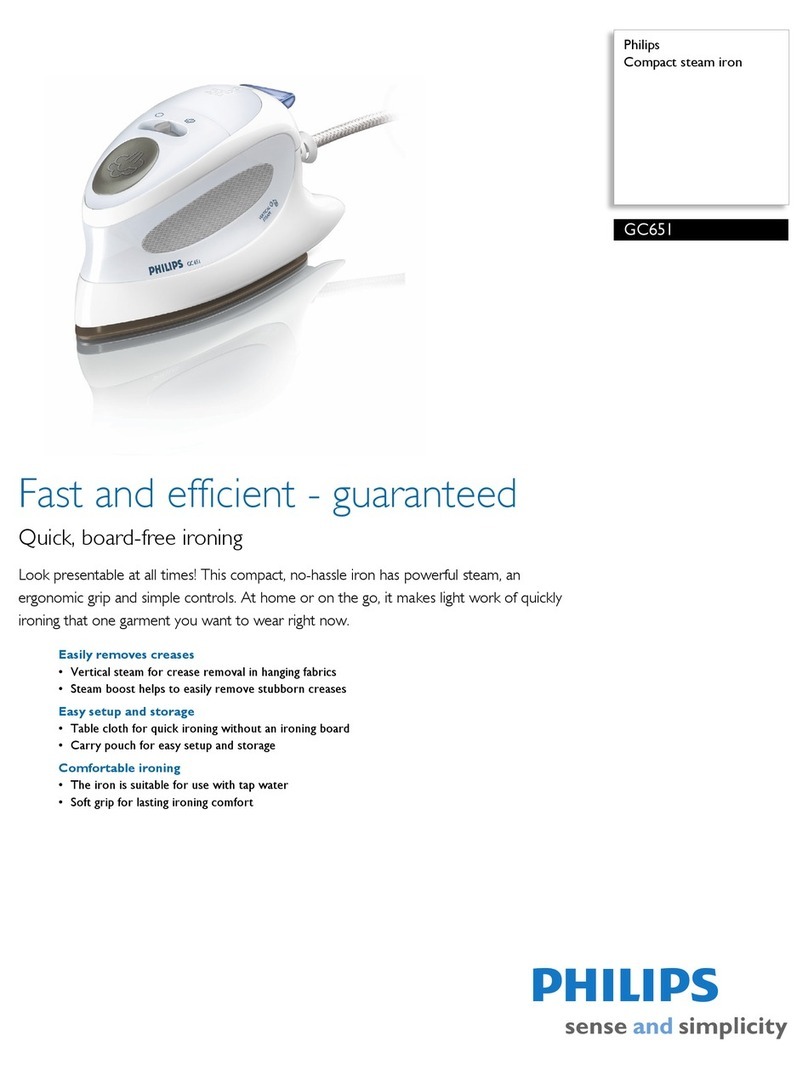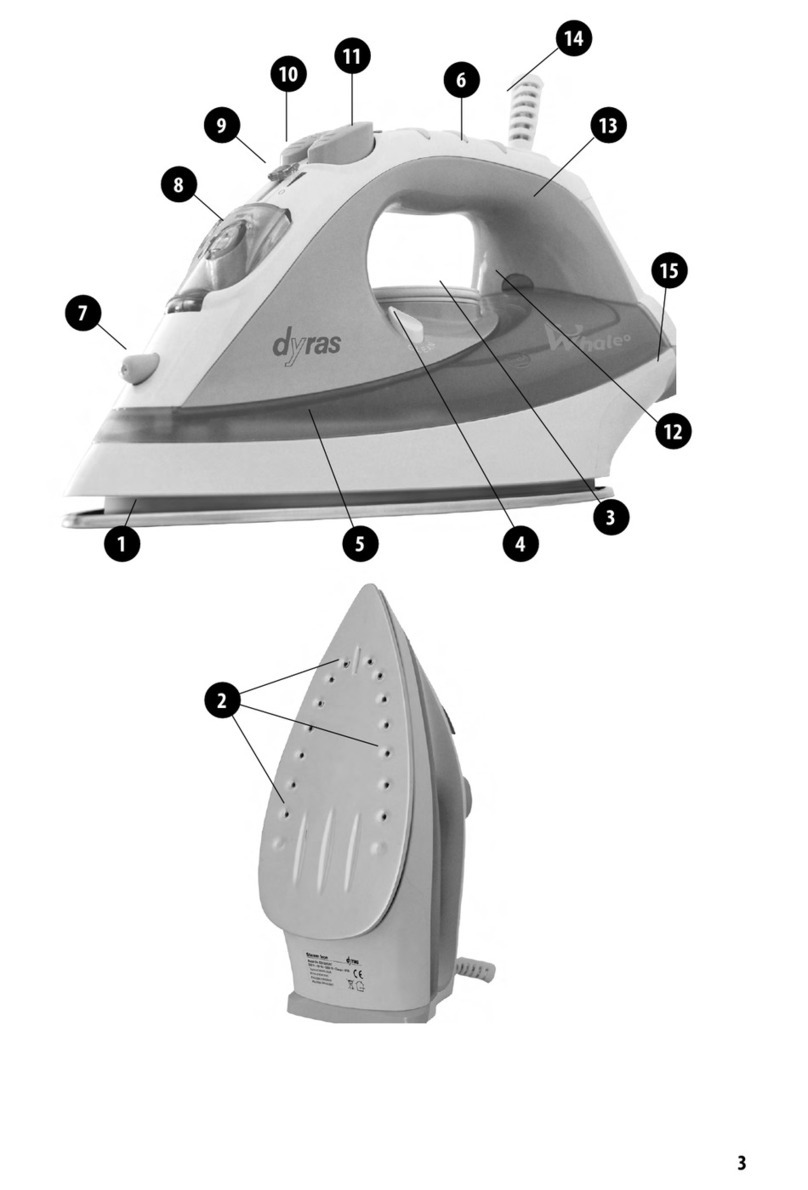
5
UTILIZZO – POSIZIONARE IL SERBATOIO DELL’ACQUA
Assicurarsi che il serbatoio dell’acqua sia correttamente allocato nell’apposito alloggio.
Fig. 2 posizionare il serbatoio dell’acqua.
UTILIZZO – STIRARE SENZA VAPORE
1. Inserire la spina (13) nella presa a muro.
2. Accendere l’interruttore principale on/off (11) portandolo sulla posizione 1. La spia si accenderà.
3. Girare la manopola di controllo della temperatura del ferro da stiro fino alla posizione desiderata
(vedere la tabella in “Istruzioni per la stiratura”). La spia (9) si accenderà.
4. Posizionare il ferro da stiro in posizione verticale (in piedi) e aspettare che la spia si spenga. Il ferro è ora
pronto per la stiratura.
Stirare il tessuto facendo scivolare il ferro da stiro sul tessuto. Durante l’utilizzo l’elemento riscaldante si spen-
gerà e accenderà automaticamente per mantenere la piastra alla temperatura impostata. Di conseguenza
anche la spia si accenderà e spengerà automaticamente.
5. Dopo l’utilizzo, ruotare la manopola di controllo della temperatura fino alla posizione 0 , spengere l’interrutto-
re principale portandolo sulla posizione 0. Rimuovere la spina dalla presa a muro. Posizionare il ferro da stiro in
posizione verticale e lasciarlo raffreddare.
UTILIZZO – STIRATURA CON VAPORE
1. Riempire il serbatoio dell’acqua (vedere “Riempire il serbatoio dell’acqua”).
2. Inserire la spina (13) nella presa a muro.
3. Accendere l’interruttore principale on/off (11). Portare la manopola di controllo della temperatura (2) oltre
il simbolo del vapore. SOLO COSÌ LA PIASTRA RAGGIUNGERÀ LA TEMPERATURA NECESSARIA PER
LASTIRATURA A VAPORE, EVITANDO PERDITE DI ACQUA.
4. Quando entrambe le spie si saranno spente è possibile cominciare la stiratura.
5. Quando la spia del vapore si accende, è necessario aspettare che si ricrei la pressione sufficiente
6. Il getto di vapore sarà omogeneo solamente dopo aver premuto il pulsante di erogazione del vapore diverse
volte.
7. Lasciare fuoriuscire il vapore (per circa 20 sec.) prima di ogni utilizzo premendo il tasto di erogazione del
vapore (3) per rimuovere i depositi di calcio.
8. Dopo l’utilizzo, ruotare la manopola di controllo della temperatura fino alla posizione 0 , spengere l’interrutto-
re principale portandolo sulla posizione 0. Rimuovere la spina dalla presa a muro. Posizionare il ferro da stiro in
posizione verticale e lasciarlo raffreddare.
Se la temperatura è troppo bassa, delle gocce d’acqua possono fuoriuscire con il vapore provocando delle
macchie. In caso ciò accada portare il comando della temperatura alla posizione raccomandata. Non continua-
re a stirare se delle gocce d’acqua sono presenti sulla piastra.
